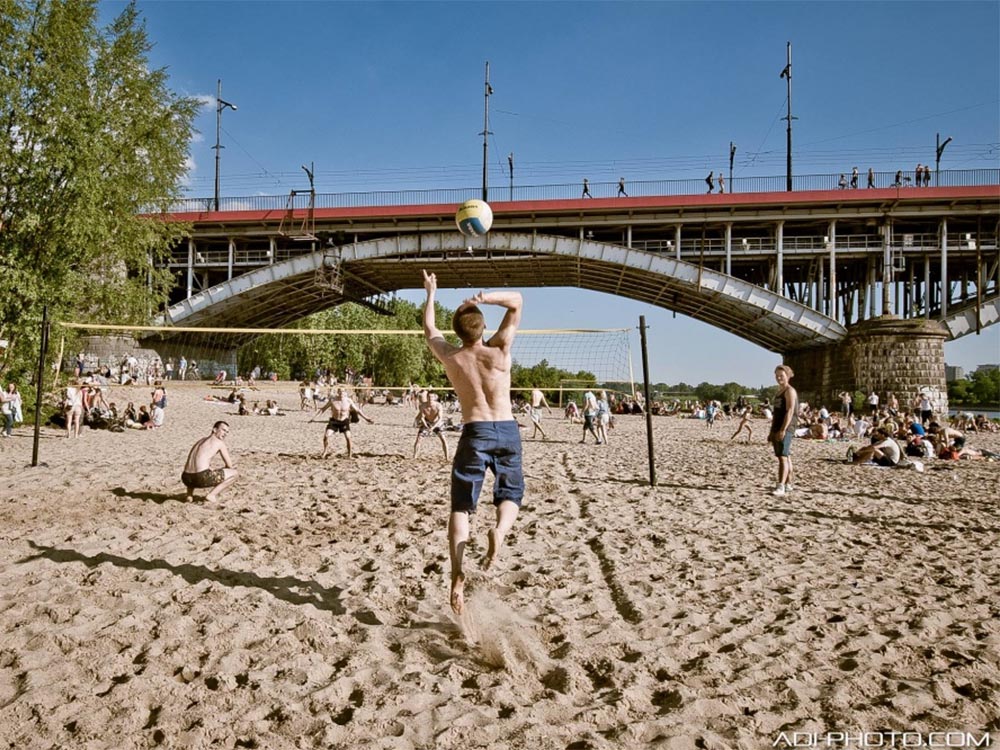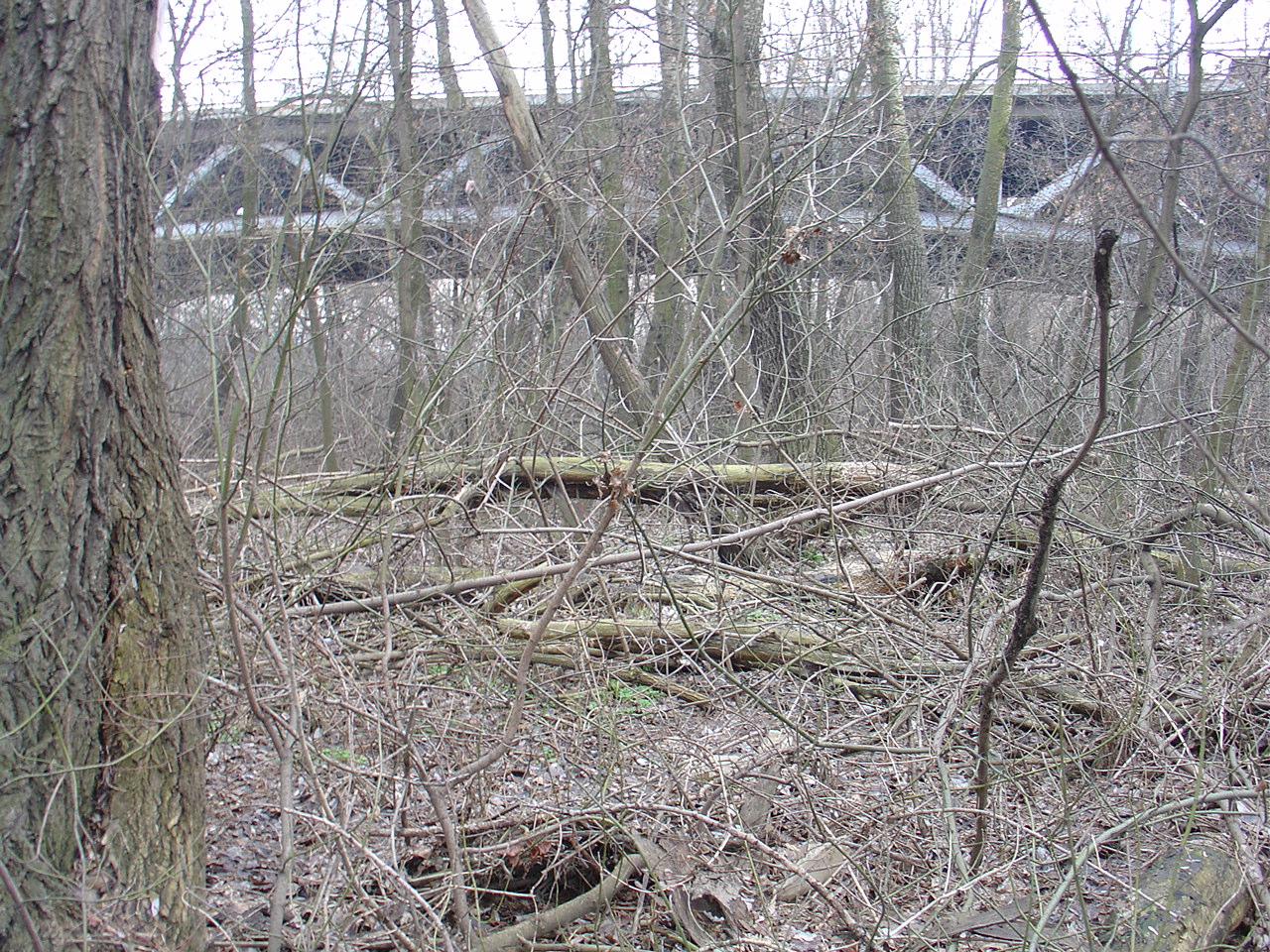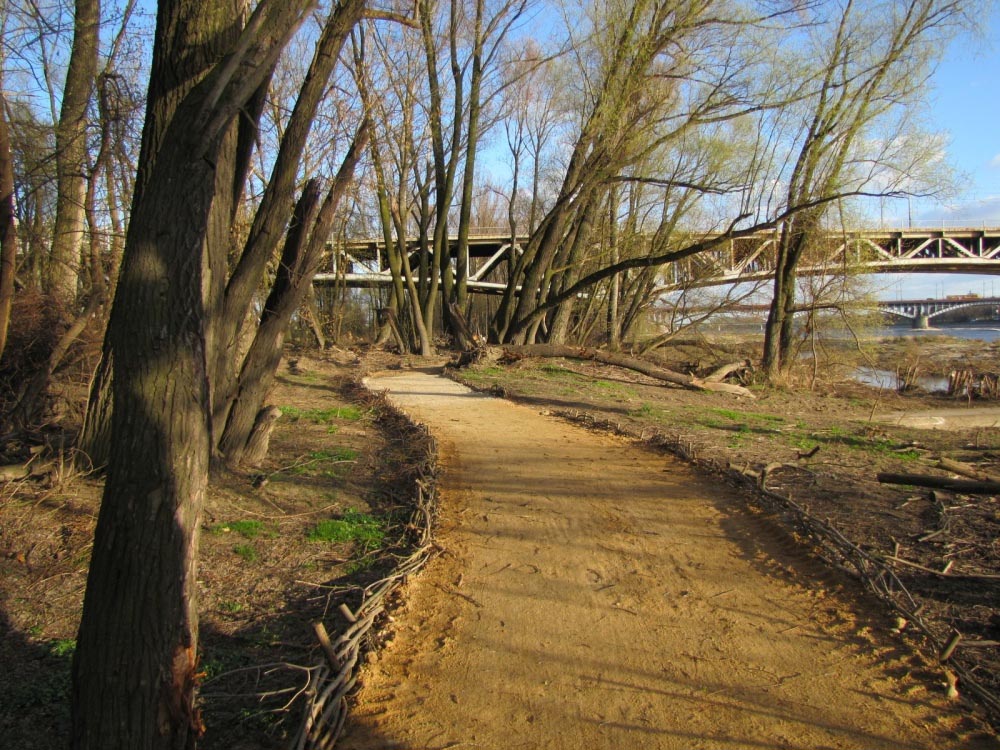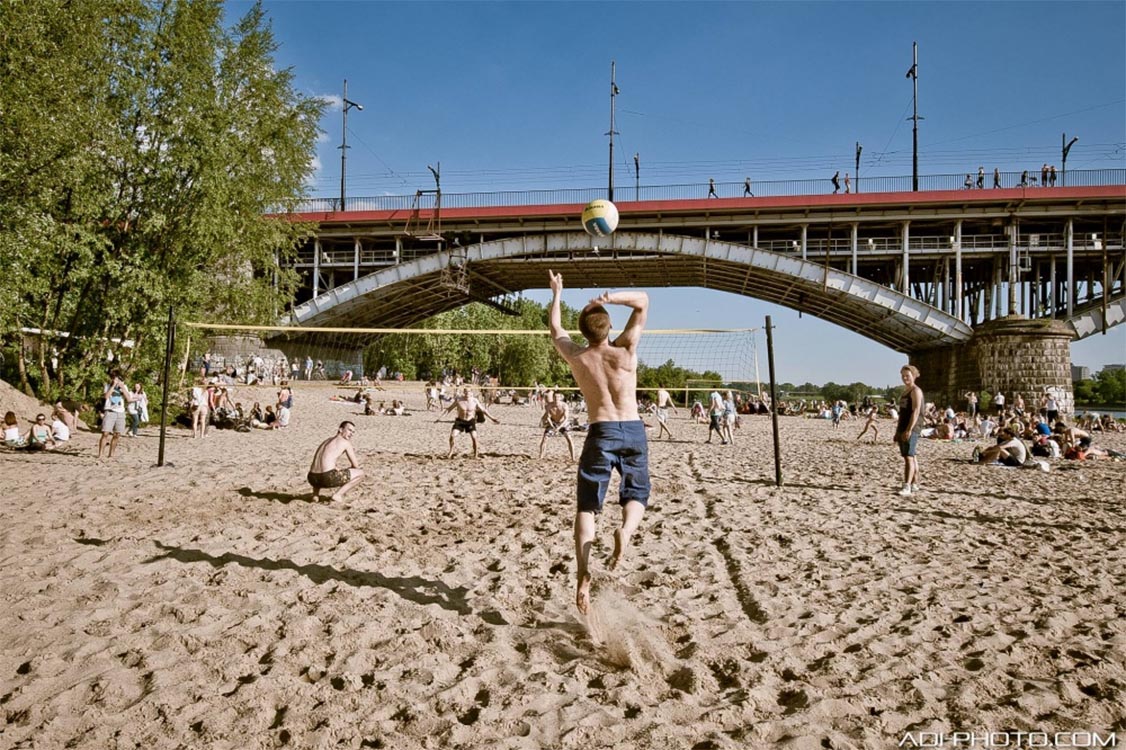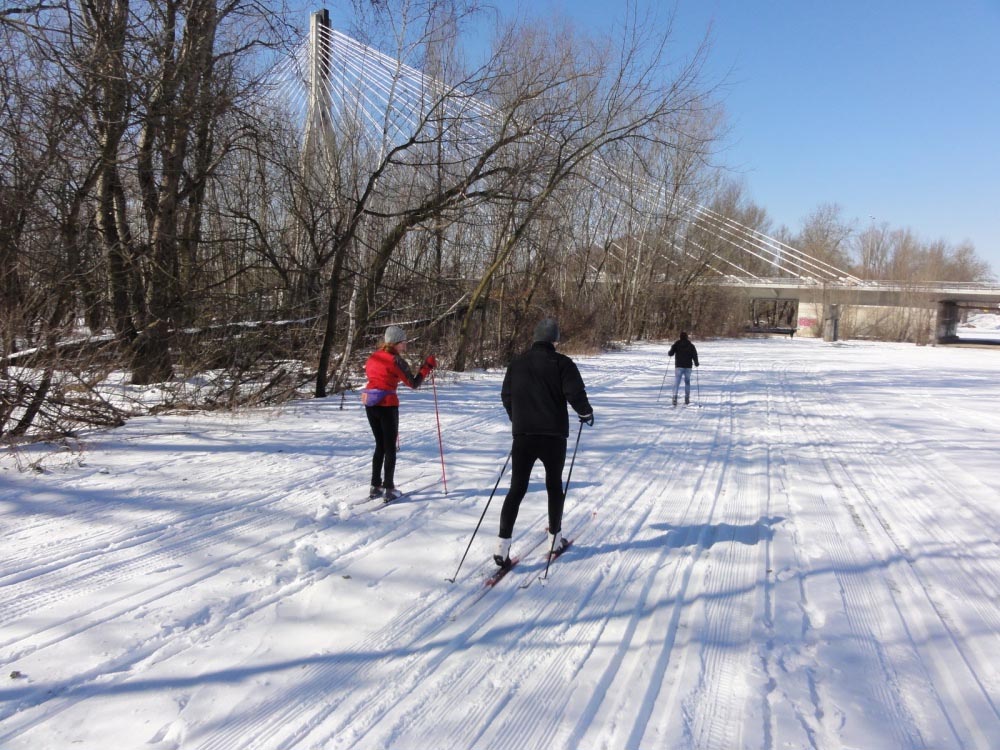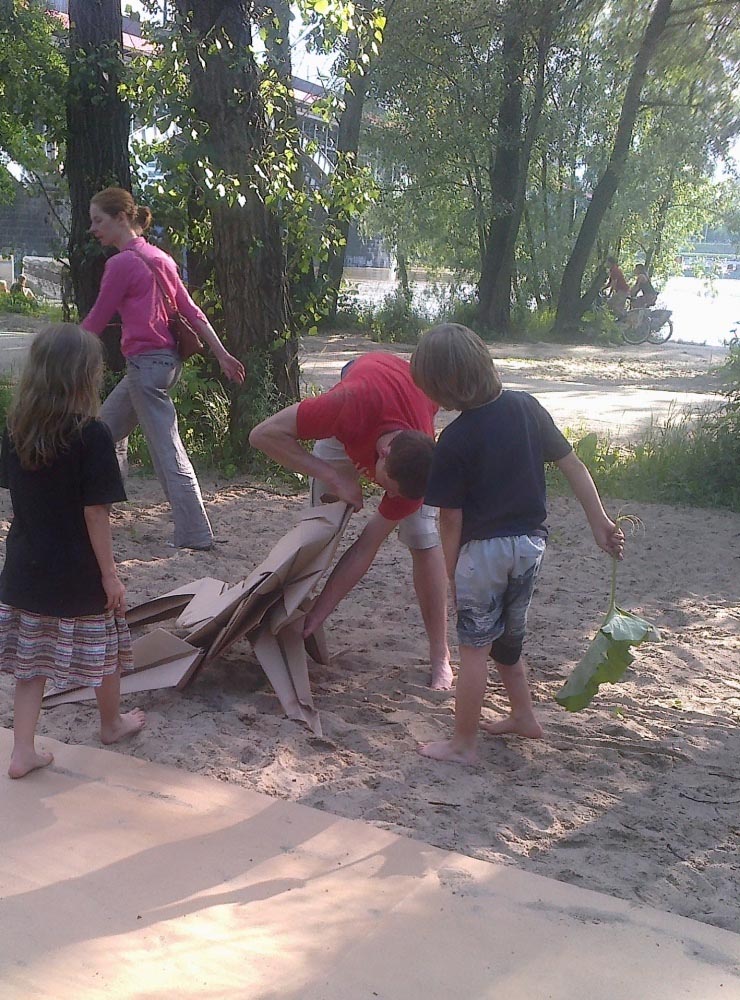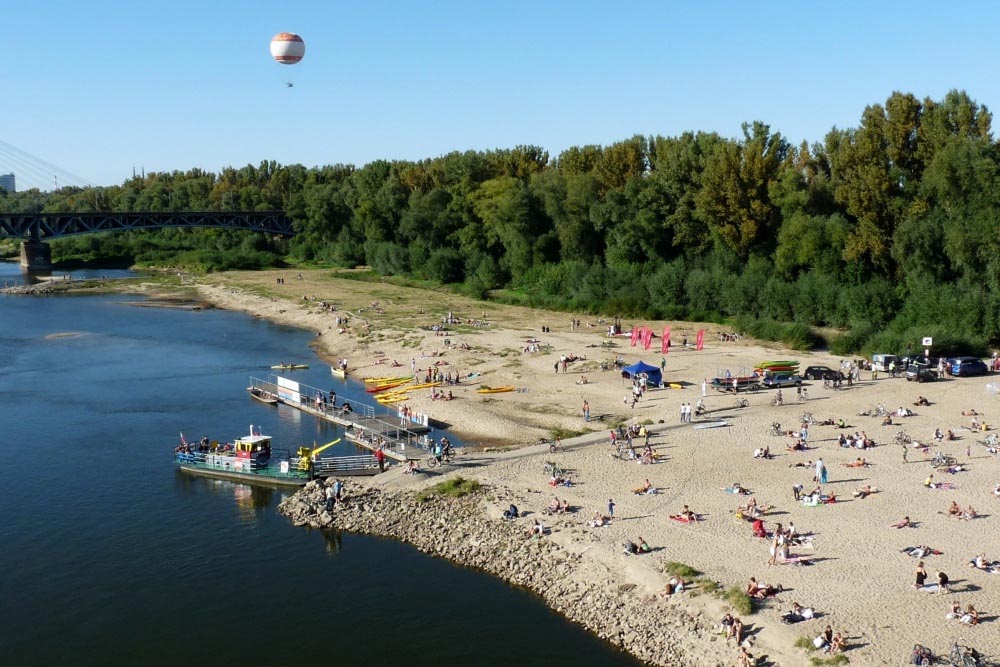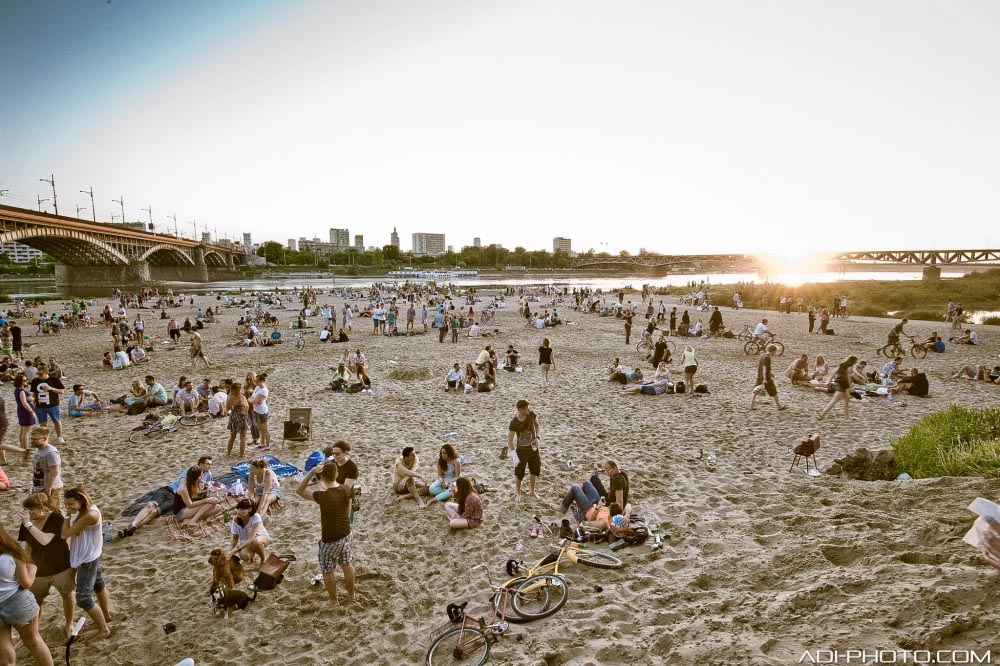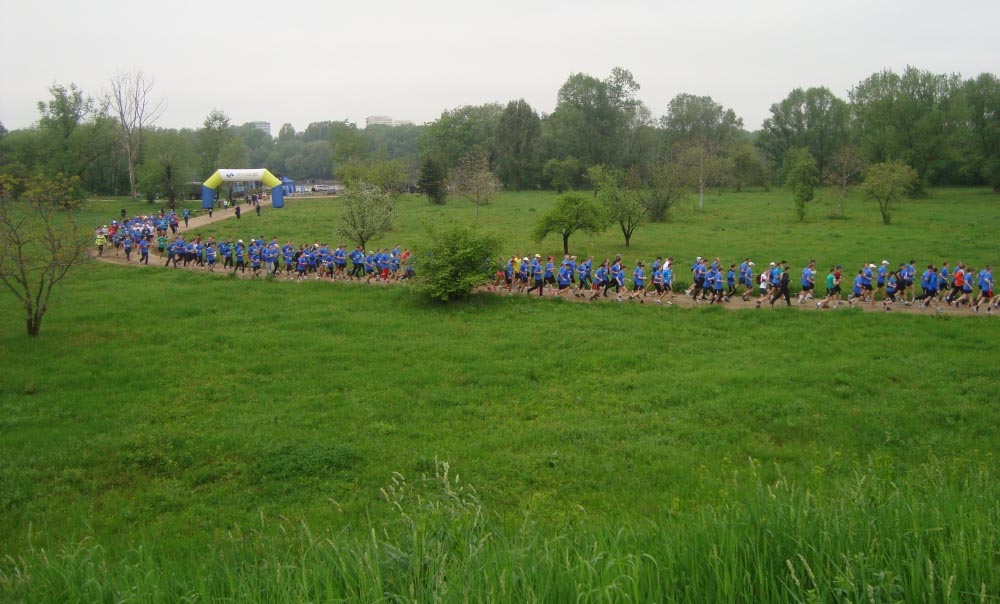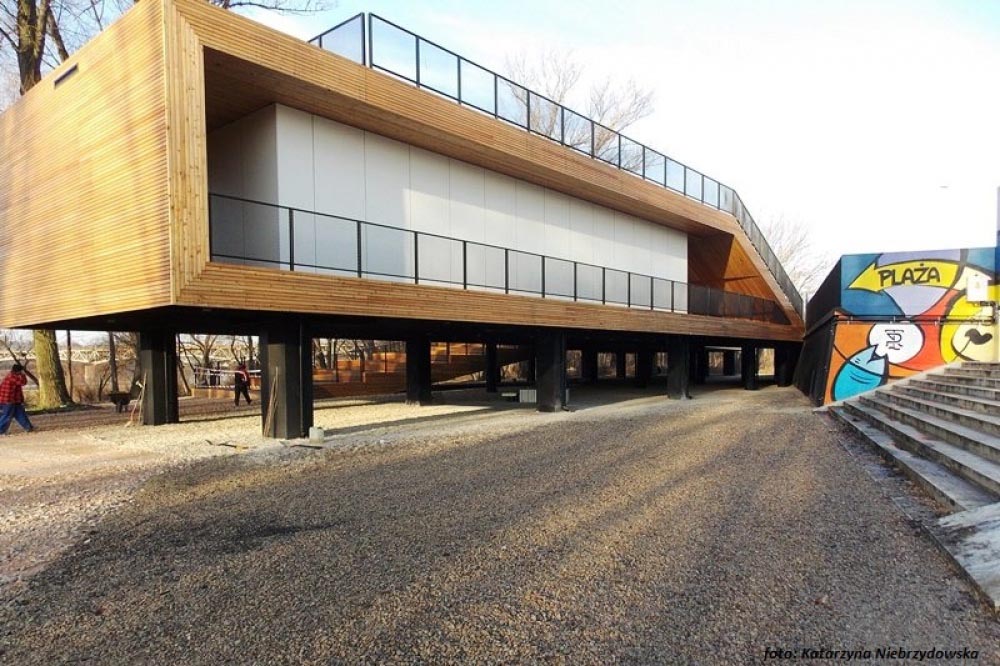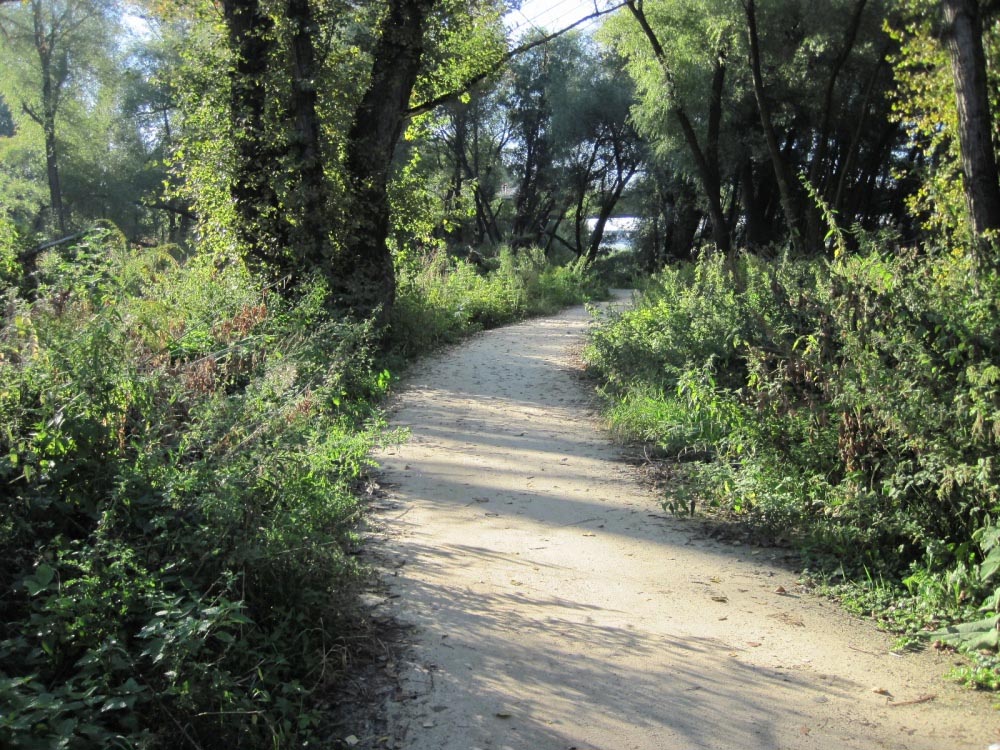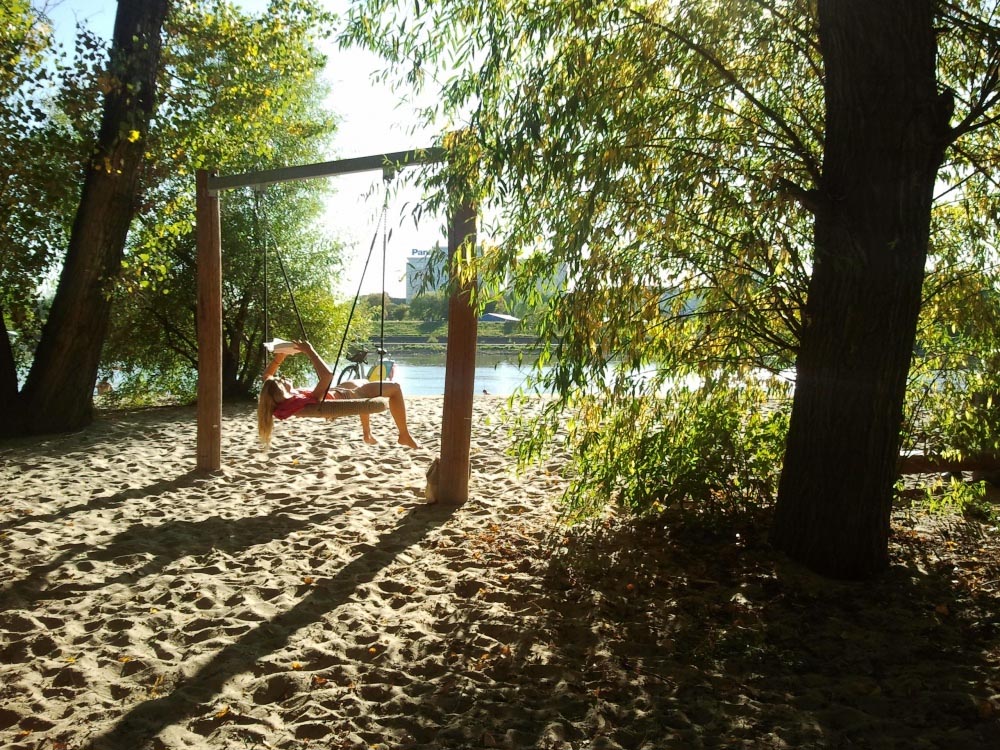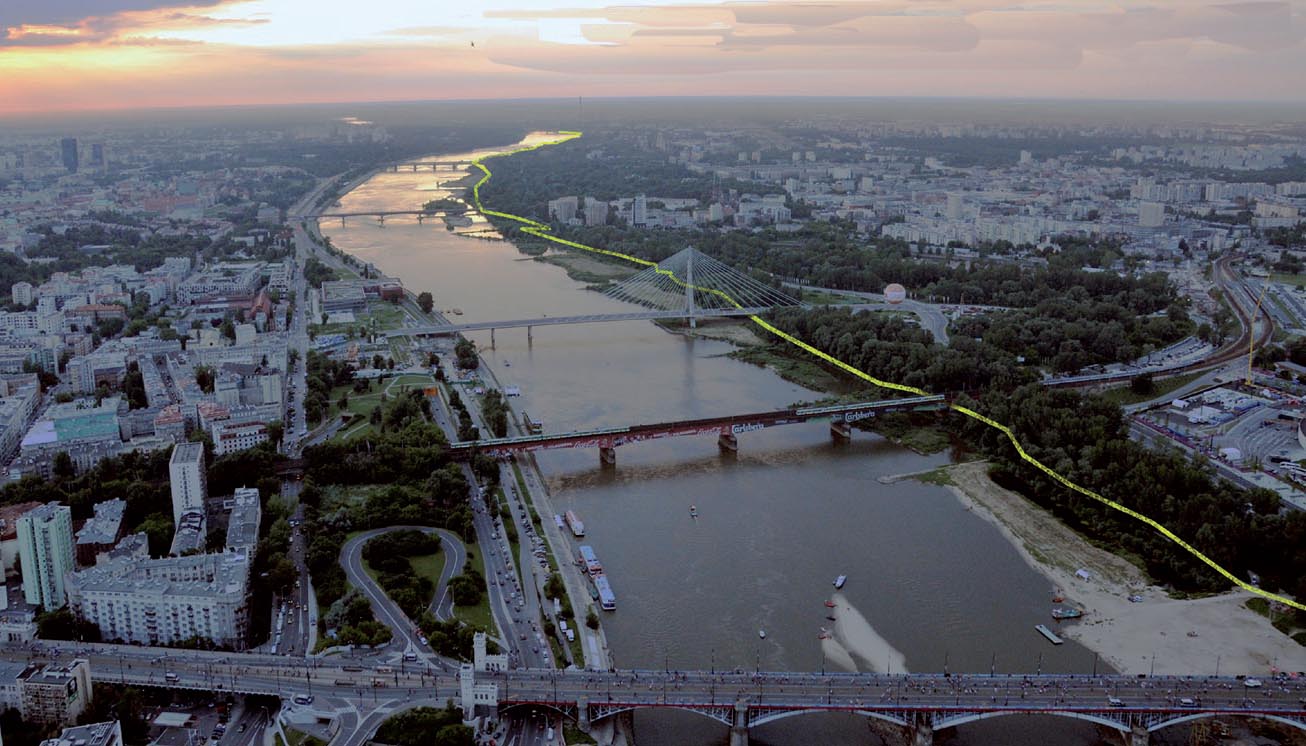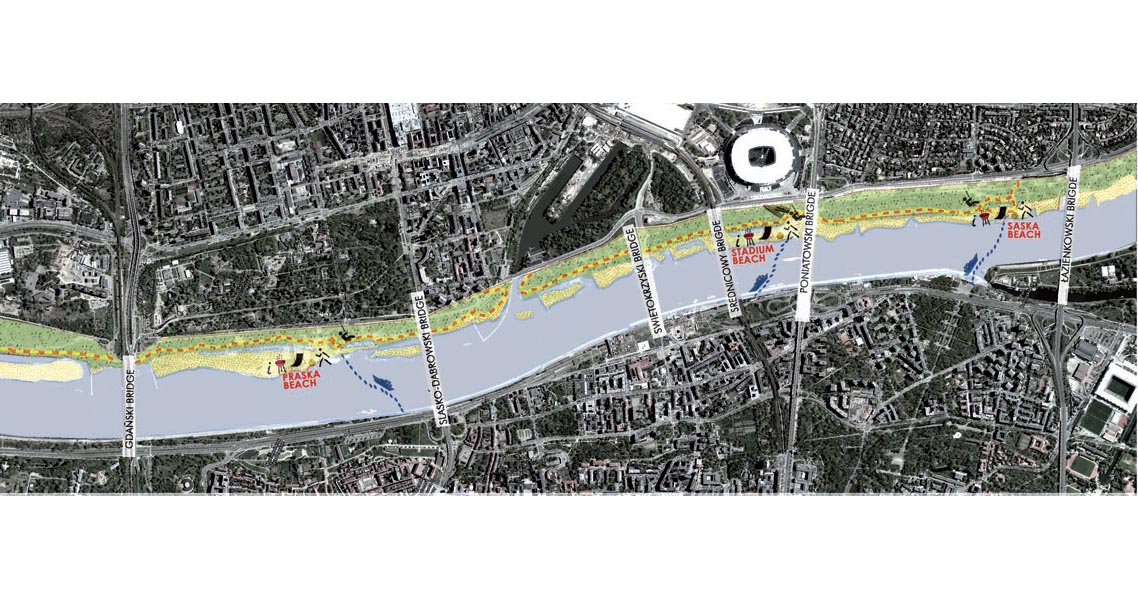Previous state
The Vistula is Poland’s biggest river. Navigable from its upper reaches all the way to its mouth, it was for centuries a crucial means of transport in the country. Nevertheless, after the nineteenth century, its importance in this regard soon dwindled as road and rail transport was increasingly used and, when the river transport of goods and people declined, riverbank cities like Warsaw, Kraków, Gdansk and Toruń turned to face away from it. Warsaw’s break with the river took a particular form. The left bank, adjoining the administrative and nerve centre of the city, was eventually filled with motorways and road junctions which interposed a barrier between the urban fabric and the riverfront.
The right bank underwent another kind of separation from the Praga-Południe district, one of the oldest and most densely populated in the city. Until the beginning of the twentieth century the river offered sandy beaches which filled with bathers in the summer but in the following decades, with two world wars, municipal negligence and general indifference, the riverfront lapsed into marginality and oblivion. Owing to ignorance about the area and absence of visitors it was used as an informal tip for rubble from demolitions occurring all around the city. This had the effect of artificially blocking the flow of the water, leading to many floods. Meanwhile, the riverside forest, infested with invasive species, grew wild over the rubble dumped on the bank. Dense foliage and unattended undergrowth made the river even more inaccessible, a deplorable situation given its proximity to such a densely populated area.
Aim of the intervention
In 2007, the Warsaw City Council decided to take action to rectify this situation. A special unit was created within the structure of the municipal government, the director of which acted as the mayor’s proxy in any matter concerning the river. With an early aim of recovering the right bank of the Vistula as a leisure space for citizens, the new entity worked with ecologist groups and other NGOs to draw up a strategy that sought to reconcile a range of different interests. Another concern was to ensure that frequent flooding would not damage any improvements made to the riverbank. Moreover, the plan was to conserve the natural character of the zone while also providing better access to it and revitalising it by offering uses and facilities that would make it appealing to citizens. The project represented an investment of one and a half million euros, 90% of which was to come from the municipal coffers. It also achieved European funding to defray costs associated with attracting tourists and re-establishing the natural habitat of two species of native birds. Moreover, the project was supported by some private investors.
Description
The first phase of work consisted of cleaning tasks. The riverbed was cleared of rubble in order to improve the flow of water and lessen the risk of flooding. The riverside forest was also cleaned up to offer easier access to the water. Between 2009 and 2011, thirty-seven hectares of forest were cleared of weeds, thicket, fallen tree trunks and invasive species of willows. This opened up a path of eight kilometres along the river. In winter the new track is used for cross-country skiing and, the rest of the year, by cyclists and walkers. It is signposted with information concerning the natural elements along the way and distance markers for runners.
The riverside walk links three sandy beaches equipped with deck chairs, umbrellas, barbecues, public toilets, sports fields, games areas and information points. Saska beach, adjoining a residential area of the Praga-Południe district, is the southernmost one and it begins just after Łazienkowski Bridge. In 2013 a pavilion housing a cafeteria, sanitary infrastructure and a shop hiring sports equipment was constructed here. Downstream, between the Poniatowski and Średnicowy bridges, is Stadium Beach which, as its name suggests, is near the new installations of the Polish national football team, which were opened in 2012. Further north, between the Slasko-Dabrowski and Gdański bridges, is Praga Beach, named after the nearby nineteenth-century Praga Park, home to the Warsaw Zoo. Each of the three beaches has a free ferry service for cyclists and walkers, connecting them with the western bank of the river.
Assessment
There can be no question about the fact that, since the renovation, the right bank of the Vistula River has recovered its lost popularity. This was confirmed with a municipal survey in 2013, when the work was finished, with the aim of assessing how well the aims of the project had been achieved. It is also demonstrated by its nomination for the “Stolek”, an award presented by the editorial board of a well-known Warsaw newspaper. However, the popularity of the place has drawbacks as well. The local press has reported the typical controversy over the impact of large numbers of people on such a fragile natural space.
Intensive use of the beaches has generated large amounts of rubbish, including glass from broken bottles, which has caused some problems. The City Council, working with several NGOs and local businesses, has launched campaigns to educate people about the need to respect and conserve the river’s natural character. In any case, the problems of the river when it was an ignored and neglected place were much more serious than they are now, proof that accessibility is the key to making a marginal space known, enjoyed and appreciated by everyone. The best protection a fragile place can have is becoming part of collective consciousness.
David Bravo │ Translation by Julie Wark
[Last update: 19/05/2021]


